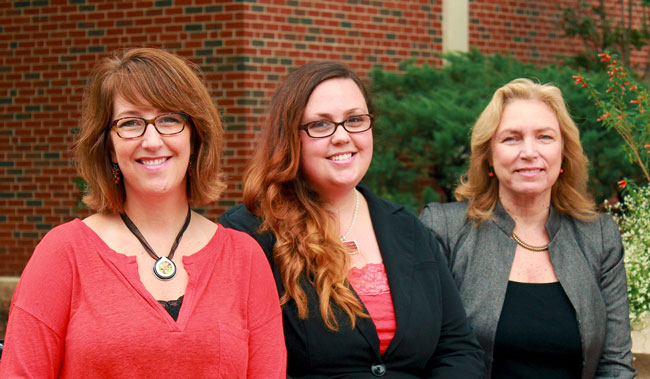National research grant focuses on rural health in Oklahoma
Wednesday, October 7, 2015

A team of researchers led by Whitney A. Bailey, Ph.D. in the College of Human Sciences at Oklahoma State University received a two-year, $311,602 grant focused on improving health literacy among rural elders, their family caregivers and rural hospital discharge planners in Oklahoma.
The grant from the Rural Health and Safety Education Competitive Grant Program is funded by the USDA’s National Institute of Food and Agriculture and was one of only four funded nationwide.
The project titled “A Community Approach to Care Education: Empowering Rural Hospitals and Caregivers to Engage in Exceptional Care of Rural Elders” involves several partnering institutions and organizations including AARP Oklahoma, the Oklahoma Department of Human Services, the OSU Center for Rural Health, the Oklahoma Healthy Aging Initiative housed at the University of Oklahoma, the Southern Rural Development Center and the College of Human Sciences Center for Family Resilience.
The team led by Bailey will work to close the gap between what caregivers need and what they receive during hospital discharge processes and other points of care. One key outcome of the project will be a curriculum for Oklahoma Cooperative Extension Family and Consumer Sciences Educators to deliver to rural hospital discharge planners and family caregivers. Families will receive caregiver toolkits with the information and resources they need while caring for a loved one.
The number of burdens on small, rural hospitals is overwhelming, according to Jeff Hackler of OSU’s Center for Rural Health. He said this project will help rural hospitals meet new standards for providing discharge instructions to patients.
“Through this endeavor, rural patients will continue to receive quality health care in their communities that meets or exceeds what is available in metropolitan areas,” Hackler said
The curriculum will include six content areas: positive nutrition and food safety for family members; positive financial behavior; environments, safe housing and communities; healthy members, healthy relationships; preventing exploitation and abuse; and health care tasks.
Bailey, who is the Bryan Close Professor in Adulthood and Aging, will work with Sarah R. Gordon, Ph.D., Director, University Assessment and Testing at OSU, Emily Roberts, Ph.D., environmental gerontologist and design, housing and merchandising assistant professor in the College of Human Sciences and Esther Houser, elder advocate and former long-term care ombudsman for Oklahoma.
AARP Oklahoma State Director Sean Voskuhl sees the partnership as an opportunity to expand the organization’s work in local communities with OSU and the Oklahoma Cooperative Extension Service.
“Providing additional support and resources to more than 500,000 family caregivers in Oklahoma who provide 488 million hours of care—worth an estimated $6.1 billion —to their families and friends, is a top priority for AARP Oklahoma,” Voskuhl said.
“The USDA-NIFA grant and the CARE Act are both important steps forward in supporting family caregivers, improving post-discharge health outcomes, reducing costly and preventable hospital readmissions and enabling Oklahomans to live independently in their own homes.”
Oklahoma Department of Human Services Aging Services director Lance Robertson recognizes the unique challenges rural families face when it comes to caring for their older loved ones and feels the results of the grant will be a great thing for Oklahoma.
“This important USDA-NIFA grant will help effectively train rural health providers, namely discharge planners, on the most effective ways to serve rural elders. The focus on actual caregivers is most exciting. Across our nation, caregivers struggle to find assistance and often end up burning out,” Robertson said. “They are the lifeblood of long-term care services in America. Consequently, we jump at the chance to partner on any work that can positively impact the lives of caregivers.”
